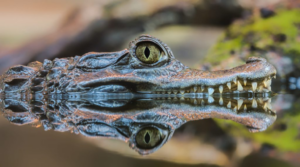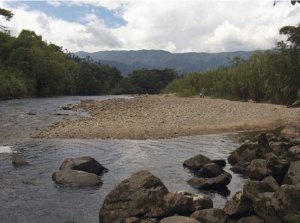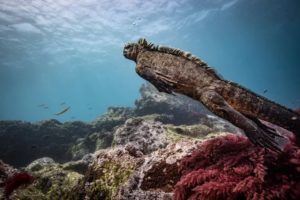Ecuador’s Amazon rainforest is an incredibly diverse natural treasure, where wildlife flourishes in lush surroundings. Among the many wonders found in this vast region, pink dolphins stand out. In this article, we will explore the presence of these fascinating cetaceans in the Ecuadorian Amazon, their unique characteristics, their habitat and the importance of their conservation.
Habitat and Distribution:
Pink dolphins, scientifically known as Inia geoffrensis, are regular residents of Ecuador’s Amazonian rivers. They can be found in the Napo River, the Yasuní River and other tributaries of the Amazon basin. These meandering rivers and their surrounding ecosystems provide the ideal habitat for pink dolphins to thrive.

Foto: El Oriente
Special Characteristics:
The pink dolphin is an extraordinary creature noted for its distinctive pink color. Their skin has different shades, which can vary from a pale pink to a deep pink. This unique pigmentation is due to a layer of blubber under their skin, which acts as protection against the environmental conditions of the Amazon.
These aquatic mammals have an agile and streamlined body, adapted for swimming in the turbid waters of Amazonian rivers. Their front flippers are elongated and flexible, allowing them to move easily among the submerged trunks and branches of the flooded jungle. In addition, they have a long, slender snout, equipped with conical teeth that they use to catch their prey, composed mainly of fish and crustaceans.
Importance and Conservation:
Pink dolphins play a vital role in the aquatic ecosystems of the Ecuadorian Amazon. As top predators, they regulate the fish population and contribute to the balance of the river ecosystem. In addition, they are considered indicators of the health of the aquatic environment, as their presence or absence reflects water quality and food availability.
Despite their importance, pink dolphins face several challenges to their survival. River pollution, indiscriminate fishing and habitat loss due to deforestation threaten their existence. Therefore, the conservation of these cetaceans is of utmost importance.
Several organizations and projects in Ecuador are dedicated to the protection and preservation of pink dolphins. These efforts include environmental education, the promotion of sustainable fishing practices, and the creation of protected areas. In addition, responsible tourism and dolphin watching provide opportunities to raise awareness about dolphin conservation and contribute to their protection.

Foto: Jamu Lodge




